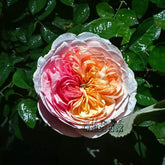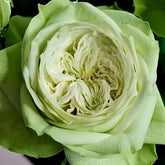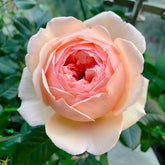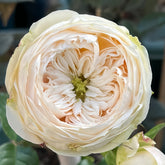Rose Powdery Mildew: Key Patterns, Influencing Factors, Prevention, and Treatment
by
SmithZoe
17 Oct 2025
As a rose enthusiast, you may have encountered a common yet frustrating issue—rose powdery mildew. This fungal disease, much like rose black spot, can compromise the health and aesthetics of your roses if not managed properly. Let’s dive into its characteristics, triggers, and practical solutions to keep your roses thriving.
1. Disease Characteristics & Development Patterns
Rose powdery mildew is classified as a fungal disease, sharing this trait with the well-known rose black spot. Its most distinct symptom is the appearance of a powdery white mycelium on various parts of the rose plant.
- Affected plant parts: It typically first emerges on leaves, tender shoots, and fruits in early summer. Over time, it can also spread to petioles, stems, and other above-ground tissues.
- Initial infection site: In most cases, the disease starts from the parts of the plant closest to the ground, gradually spreading upward if conditions remain favorable.
2. Key Factors That Trigger Rose Powdery Mildew
Several environmental and cultural factors can create ideal conditions for the growth and spread of powdery mildew. Being aware of these triggers is the first step in prevention:
- Climatic conditions: Two main weather combinations favor the disease—prolonged rainfall paired with temperatures below 25°C, or high humidity (exceeding 60%) combined with temperatures under 25°C.
- Temperature fluctuations: Frequent and abrupt changes in temperature disrupt the plant’s natural defense mechanisms, making it more susceptible to infection.
- Cultural practices: Over-application of nitrogen fertilizer promotes lush but weak growth, which is prone to mildew. Additionally, overcrowded planting (leading to poor air circulation) and waterlogged soil further increase the risk.
3. Effective Preventive Measures
Prevention is always more efficient than treatment when it comes to rose powdery mildew. Incorporate these practices into your rose care routine:
- Choose resistant varieties: Start with rose cultivars that have been bred for powdery mildew resistance—this reduces the risk of infection from the outset.
- Sanitation practices: Destroy all infected plant debris (such as fallen leaves and pruned branches) to eliminate overwintering fungal spores. Also, thoroughly clean up fallen leaves in autumn to prevent spore accumulation.
- Soil and water management: Conduct deep tillage to improve soil drainage and avoid waterlogging. Practice moderate and timely watering—avoid overhead irrigation that wets foliage excessively.
- Fertilizer balance: Apply nitrogen fertilizer in moderation, and supplement with potassium fertilizer in a timely manner to strengthen plant vigor and enhance disease resistance.
- Pruning and rotation: Perform mandatory sanitary pruning in late winter or early spring to remove dead or weak wood and improve air circulation. For rose beds, implement crop rotation to break the fungal life cycle.
- Preventive fungicide sprays: Use fungicides as a preventive measure (especially during high-risk seasons like early summer) to create a protective barrier against spore germination.
4. Treatment for Infected Roses
If your roses do become infected with powdery mildew, don’t panic—treatment is possible, and the approach overlaps with that of rose black spot.
Since both diseases are fungal, most fungicides effective against rose black spot will also work for powdery mildew. For specific fungicide recommendations and application methods, refer to the guidelines provided in our previous article on Rose Black Spot: Development Patterns and Management.
By understanding the patterns of rose powdery mildew and proactively implementing preventive measures, you can significantly reduce its impact on your rose garden. Remember, a combination of proper cultural care and timely intervention is the key to keeping your roses healthy and vibrant.
Tags:
















